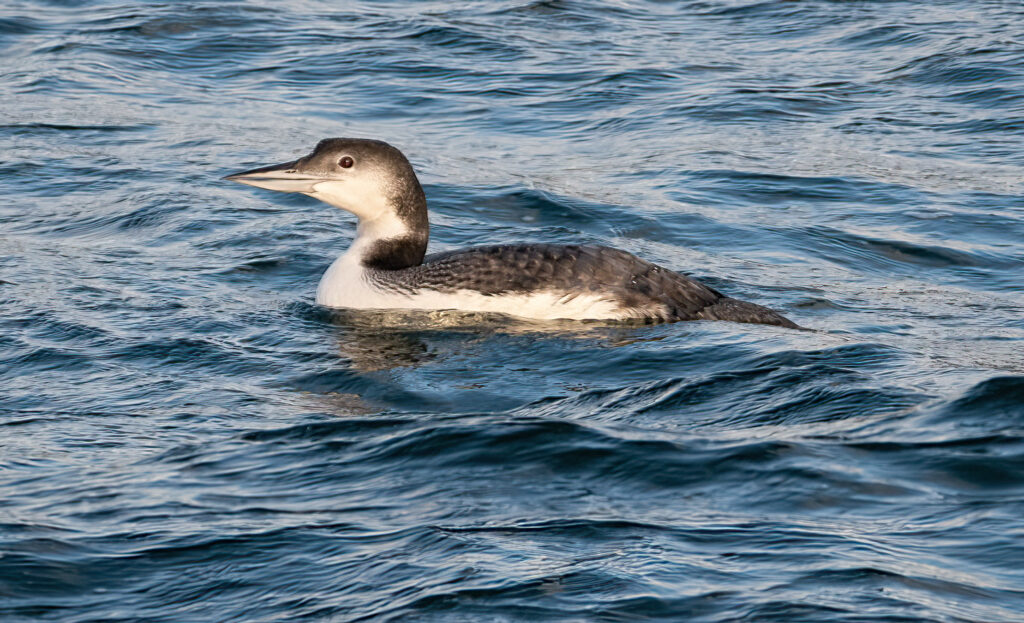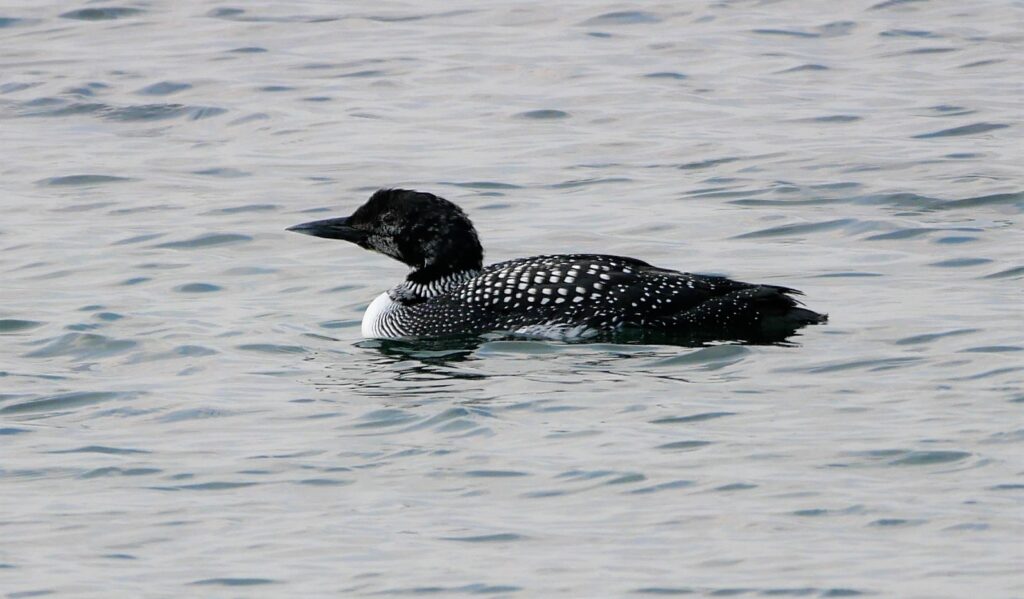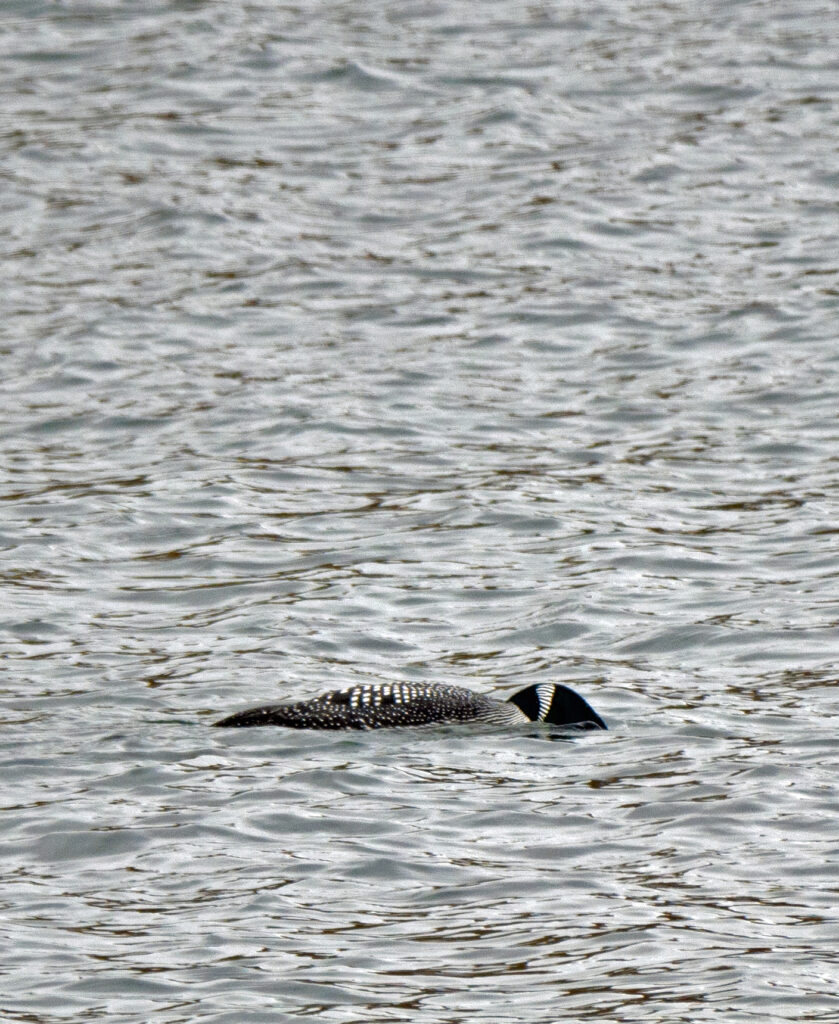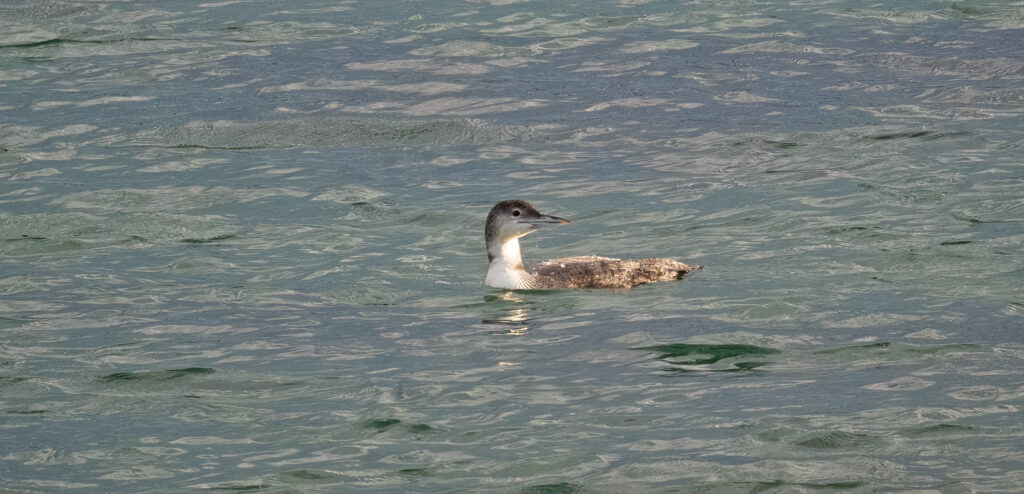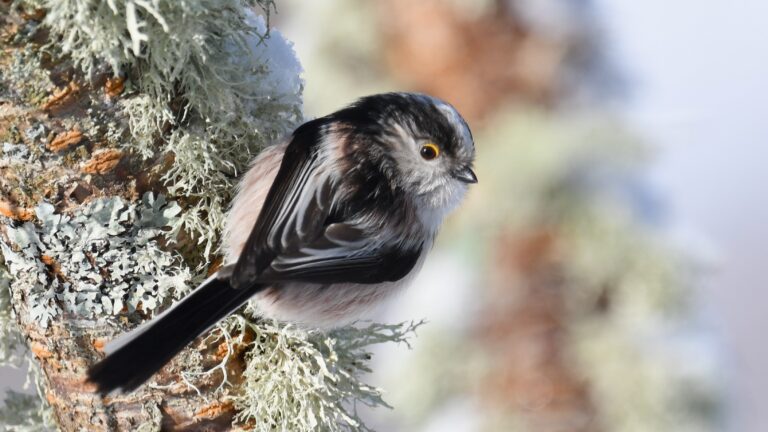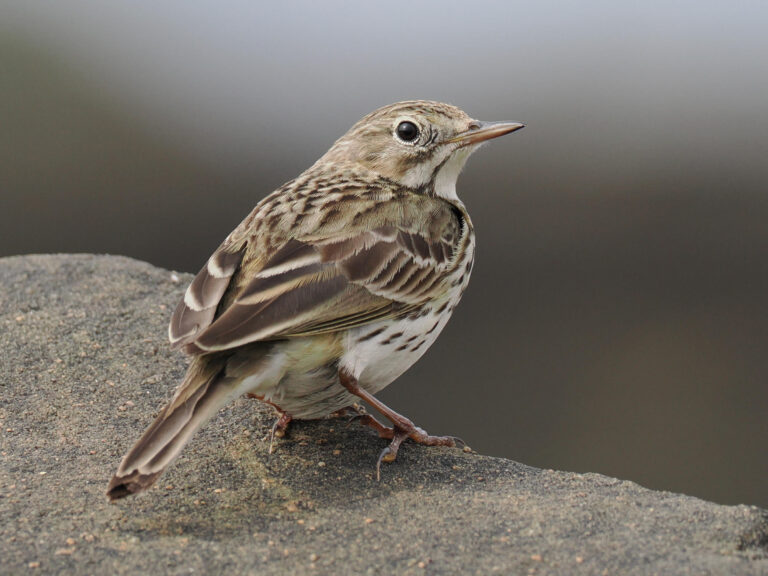Gaelic name: Buna-bhuachaille
Usually arriving around October and November, the great northern diver is an impressive visitor to be seen in our winter coastal waters. 5000 birds overwinter in Europe, 75% of these being in the UK, with most of those in northern and western Scotland, this is therefore an important overwintering species for our area.
Identification.
Of the three divers likely to be encountered over the winter in the area, the great northern is the biggest and most robust. Possible confusion species are red throated divers, with something like 10000-15000 overwintering in the UK, and black-throated divers with around 1500 overwintering birds.
Here’s a useful ID guide for overwintering divers from the BTO.
There is another possible identification complication with the rare white-billed diver sometimes being seen in our area. This is a bird with a very similar build to the great northern. More information can be found at Birdguides.
The nearest breeding populations of the great northern are Iceland and Greenland. It also breeds in North America where it is known as the common loon. Its summer plumage is glorious but rarely seen here. Below is a photo of a bird in April and the breeding plumage is beginning to appear. I’ve also been advised (thanks Dave Wheeler) that Loch Eribol is a potentially good place to see summer-plumaged birds in early summer.
Where to look.
Just off shore in shallow, sheltered water, they can be seen almost anywhere along our coastline. They often come quite close, giving good views and allowing for observation of behaviour. Here are two birds hunting for food in the Kyle of Tongue.
They feed primarily on fish of various species, and also take crustaceans, molluscs, aquatic invertebrates and amphibians. They hunt underwater by diving. They dive to depths usually between 3 and 10 metres, submerging for around a minute.
Further information.
Although I hear the evocative calls of breeding black-throated divers every summer here in Sutherland, I have never heard the similarly wonderful call of the great northern diver. You can hear it via the link below (a recording by Yoann Blanchon in Alaska).
Flight.
They are heavy birds and require a long distance, running and splashing over water, in order to take off. When they land, they extend their legs, their webbed feet forward, to skid along the surface. They’re able to travel long distances during migration, flying swiftly with the neck outstretched. The flight is rapid and direct, with strong deep wing-beats.
CONSERVATION STATUS
This species can be found on the following statutory and conservation listings and schedules.
UK Birds of Conservation Concern Amber listed
Species of European Conservation Concern Least Concern
IUCN Red List of Threatened Species (global) Least Concern
Schedule 1 license required (to disturb) Yes
Good luck spotting great northern divers this winter. Likely areas where they are regularly seen are Skerray Harbour, Kyle of Tongue, Kyle of Durness, Thurso bay and the mouth of the river. However they’re likely to be seen anywhere along the coast – just get yourself a comfortable spot! And don’t forget to send in your sightings so that they can be recorded.
Written by Stephen Kirkup.
All imagery, other than the BTO video identification guide, is © of Stephen Kirkup.

